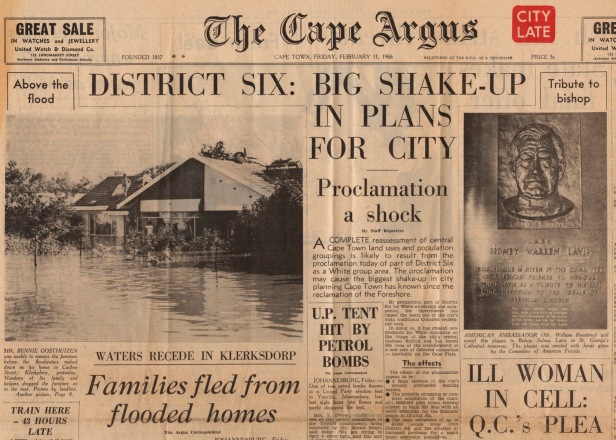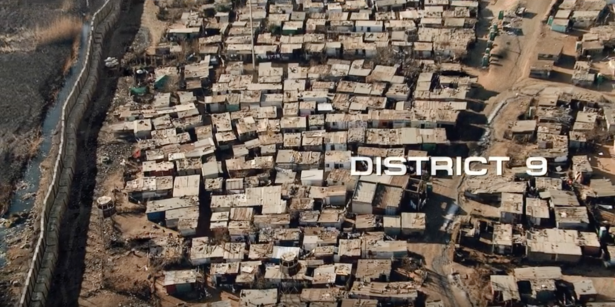Neill Blomkamp’s District 9 (2009) is often referred to as one of the more smarter sci-fi films of the past decade. Its emotionally enthralling alien invasion narrative coincides with its social commentary on the harsh truth of South Africa’s apartheid era in a way that draws immediate parallels between fantasy and reality. Not only is the sci-fi journey entertaining enough to keep the attention of the average movie goer at the forefront, there’s a strong message regarding the basis of humanity to walk away with. By taking a simple alien invasion premise, Blomkamp expands on that concept and implements a moving story between human and alien that’s never afraid to tackle commentary on our world and how humanity acts upon adversity and discovery. Society can be cruel, and with enough information — for better or for worse — we can be a threat to our own kind; ultimately making us no better than the enemy.
Film professor/historian Robert Gould supports this thesis by stating, “although (District 9) is centered around the idea of an alien invasion, it’s a movie that brilliantly questions our humanity through extra-terrestrial life. It’s very ambitious in that sense.” He’s right. Through its mock documentary (mockumentary) visual style, Blomkamp (along with co-writer Terri Tatchell) takes the traditional sci-fi structured approach, but brilliantly expands the narrative in a way that answers the question on what happens when the manipulators become the manipulated. Rather than a “what would ‘they’ do with us?” situation, we’re asked: “what would we do with ‘them?’”

The premise of the film is simple. In the 1980s, an enormous spacecraft entered Earth’s atmosphere and stayed in stasis over the Johannesburg, South African skies. The area was eventually explored upon by local authorities, and on board that ship were countless, seemingly harmless alien creatures who were in desperate need of help to “get back home.” These creatures were then rescued and placed in a refugee camp called District 9. Over the next 20 years, these “visitors” would be subject to abuse, crooked government legislation and lower class exploitation for their resources — sound familiar? This militant government company, called M.N.U. (Multi-National United), took over the camp and labeled the aliens as “prawns.” Their aim was to not only settle these prawns in this isolated enclosure (similar to the slums of the South African apartheid era), but to eventually use their alien weaponry against them for their own near-genocidal agenda of corporate greed.

The main protagonist we follow is an M.N.U. executive named Wikus van der Merwe (Sharlto Copley) and his story is a reflection on humanity and redemption. Sometimes to fully understand human nature and the value of life, you have to unfortunately place yourself in a situation where everyone turns against you. Before his battle began, however, he was originally assigned to help lead the relocation of the prawns to a new camp (District 10) that was further away from the city. As he got the prawns to sign their eviction notices, he stumbled across a fuel tank containing this hazardous black liquid. Through his awkwardness, he clumsily released some of the black goo and sprayed it onto his face. He tries to keep these series of unfortunate events a secret, moving about his day like nothing happened, but he becomes drastically ill and passes out come nightfall.

Once Wikus regains consciousness, he quickly notices that he’s starting to physically mutate into a prawn himself. He is the first successful bonding of human and prawn DNA, so he is quickly taken away by M.N.U. to have his body experimented on. The company’s goal from all this was to use Wikus (against his own power) as a research subject to figure out how to use the prawn’s biotechnology weaponry for their own militant purposes; phase one of the dark path humanity can take. In this dark 8-minute sequence, we’re shown a recording of the numerous experiments on Wikus. He, along with his alien arm, is forced to use these weapons against countless test subjects, including a live prawn. With Blomkamp’s documentary type visual style, the sequence is edited to look like an actual research tape. Through numerous close-ups, long shots, shallow focus points, cross-cuts and clever visual edits, it cues the viewer to see the treatment of these aliens as wrong and immoral; warranting an emotional reaction. Although no human test subjects are being targeted (just dead animals and live prawns), you feel the pain and conflict Wikus is going through at the moment, realizing that what he’s being forced to do is inhumane.
This wraps around to the apartheid allegory of how South Africans turned on “the weak and vulnerable” for the sake of white supremacy and power.

Wikus eventually escapes the research facility and teams up with a prawn — whom he had previously encountered before exposing himself to the black alien liquid — named Christopher Johnson (Jason Cope). They devise a plan to try and get back up to the mothership in the sky to save all of the prawns from this nightmare, while possibly fixing Wikus himself at the same time. The heart of this movie comes from the stunning sci-fi action and journey these two characters go through once events take a turn for the worst, but it’s only as strong as the foundation it’s built upon. The documentary type style Blomkamp uses to structure his narrative helps bring a sense of authenticity and power to the reality District 9 parallels through its alien fantasy. This movie isn’t as effective without it.
A good documentary is a factual film that displays incredible dramatic tone with its story. A good documentary also stands out from other formats of non-fiction films because it provides an opinion and a specific message, along with the facts it brings to the table. One of the things that the documentary style has contributed to modern day media is the mockumentary filmmaking technique. In this style, the narrative on the screen is fictitious, however, it is still shot in the documentary style format and based off of some fabric of reality. So above anything else, this style is best used to to analyze/provide social commentary on history — past, present or future — by using a fictional setting/narrative to stress a point. District 9 is a prime example of this technique because it is ultimately a 112-minute social allegory on not only the apartheid era, but how power can corrupt humanity against its own people.
While the apartheid era has nothing to do with aliens from outer space fighting for their freedom against the citizens of Johannesburg, the film still speaks loudly on the real life events that ensued during these troubled times in South Africa. The title of the movie is a direct allusion to an actual segregated South African residential area in Cape Town called “District 6.”

From around 1948 to the late 1990s, Southern African political economy was characterized by an authoritarian political culture based on white supremacy. This encouraged state repression of its black population for the benefit of white excellence. They were treated like dirt, and the result was half a century of segregation, discrimination and racism against their own people. People were evicted from their homes and forced to reside in slummy suburban ghettos.
This fits into Blomkamp’s District 9 narrative because not only are the prawns a reflection on those who where mistreated in the apartheid era, the authoritative human figures depict those who become egocentric and corrupt with power for their own greed. This social commentary through District 9’s cinematic atmosphere works and speaks volumes on the matter and that’s due to the way the film is shot. Although we’re dealing with aliens from outer space technology, we’re provided with this grounded, believable reality through the use of its documentary type narrative structure — which is prevalent for the majority of Wikus’ journey throughout the film.
The beginning of District 9 features a fairly long sequence of documentary stylized footage, informing the viewer of what has been happening over the past 20 years since the prawns’ arrival. One piece of footage in particular features three different authoritative figures, five different news broadcasts (that feature footage from various time frames since the mothership landed) and two interviews with civilians — which are all seamlessly edited together to establish the severity of the situation.

One of the elements documentaries and mockumentaries alike stress upon is the use of “talking heads.” This is basically a filming technique where the person in the documentary is pulled to the side and talks to the camera, answering a question or simply providing commentary on the focused event. This allows for the audience to connect with the person being filmed on a much more personal level since these style of films are designed to capture the happenings of everyday life. It gives the opportunity for the person to let the audience in on what he or she is thinking when normally they wouldn’t have the chance to. This helps establish that emotional connection early on, setting the tone for the rest of the film. If this sequence never worked, District 9 itself would’ve never worked because you’d just be left with a dull story with no (believable) emotional weight.
Even though the audience knows that the events in this film are fictitious, it still feels like a true story — to an extent. There is a deep emotional connection that can be felt with the prawns because the audience recognizes that they symbolize something even greater. The social commentary goes far beyond the apartheid. It can resemble any form of racism or xenophobia that humanity has shown over the course of its history.
Blomkamp’s best achievement with District 9, above everything else, comes from how he establishes us (humans) as the aggressors, rather than the aggressed (aliens) in this situation. This aspect is what ultimately separates District 9 apart from the typical alien invasion story you’ve seen a million times before. Rather than emoting fear, our visitors are instilled with vulnerability; it’s usually the other way around. With this angle, it’s easier to see how cruel humanity can become once given power over those who are seen as inferior — which happens far too often. This is an ultimate thesis on humanity and the cruelty/exploitation we as humans are unfortunately capable of. Our eyes are opened to the side of society that has turned a seemingly harmless species into a horrible threat (as history has shown time and time again). This movie is simply just another representative chapter in life’s book of ugly truths.


